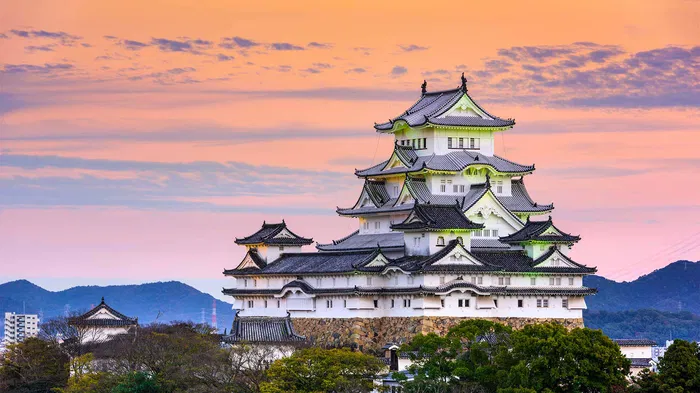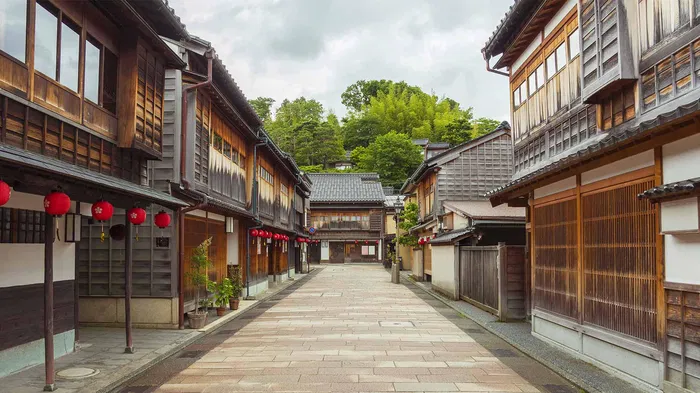In Japan, ringing in the New Year right can’t be done without kagami mochi (鏡餅). What is kagami mochi? It is a special type of mochi used to celebrate Japanese New Year, and translates literally into “mirror rice cake.” Mochi is the Japanese word for pounded rice cakes, made from glutinous rice and used in a range of savory and sweet Japanese food dishes. Keep reading to learn everything about the history and cultural significance of kagami mochi!
What is kagami mochi?
If you have visited Japan in winter, you will likely have come across these iconic seasonal mochi. Made from sweet rice cakes, kagami mochi is a traditional dessert used to celebrate Japanese New Year. The New Year in Japan is one of the most important events in the country, along with New Year's Eve, called Omisoka, held on December 31st. On the Japanese calendar, the New Year period is known as Shogatsu and is celebrated from January 1st to January 3rd.
Traditionally, kagami mochi is perfectly white with two layers of mochi stacked, steamed and pressed into shape, with the top layer slightly smaller than the base mochi. With extra decorations, usually including a small 'dai dai' mandarin on the top (it should have an attached leaf), kagami mochi are both ornamental and edible. Kagami mochi sometimes has a sheet of kombu (seaweed) and a skewer of dried persimmons. Other additional decorative elements depend on the region. For example, some areas throughout Japan use three-layer kagami mochi.
The Japanese New Years Mochi
History of Kagami Mochi
Its name “mirror mochi” references kagami mochi’s round shape resembling an old-fashioned bronze or copper mirror. This object was considered an important religious symbol. Traditionally, it is believed the New Year god called Toshigami will visit your home for the New Year, and offering them kagami mochi will bring you good luck for the year to come. It is said to have first appeared as a Japanese tradition during 14th century Japan, in the Muromachi period.
What is the meaning of kagami mochi?
Kagami mochi carries a lot of symbolism and cultural significance. As a key decoration for Japanese New Year, the two rice cakes stacked up can symbolize the past year meeting with the upcoming year. It's said that kagami mochi signifies the overlap between happiness and fortune and therefore brings luck and positive resolutions in the New Year.
In some interpretations, the two pieces of mochi can represent the balance of yin and yang, which is the sun and the moon. There's also a relationship between the spirit of the rice plant residing inside the mochi pieces. It's traditionally meant to be a gift for kamisama (gods) made from rice, the most important food staple in Japan.
For the decorations, the word for the mandarin "daidai" also means "generations," symbolizing the different generations of a family. "Konbu" is also significant as this word for kelp sounds similar to the Japanese word for "being happy," yorokobu, so it's also added as a lucky charm.
When to display kagami mochi?
You'll find this decorative type of Japanese New Years mochi sold throughout Japan in December. Most Japanese households start displaying kagami mochi the day after Christmas. They remain on display from December 26th to the 28th. However, they are not initially displayed on the unlucky days of the 29th or 31st. This is because the pronunciation of the Japanese word "29th" sounds like the word for "suffering," and 31st is considered to be too "last-minute" a setup. It's seen as a bad to welcome luck into the new year and rude to your kamisama visitors!
How to display kagami mochi
Traditionally, kagami mochi were placed in different rooms throughout Japanese homes, and some people still practice this to maximize their luck! However, these days they are typically set up in the household's kamidana (Shinto altar), butsudan (Buddhist altar) or tokonoma (a traditional decorated alcove in the home's main room).
Additional decorations for kagami mochi
The kagami mochi cakes are stacked on a small decorated pedestal called a sanpo, and they sit on top of a traditional sheet of paper called a shihobeni. Not only is it part of the aesthetics of kagami mochi, it also represents a good omen for a home. It's believed to prevent house fires and other disasters in future years.
Similar to those hanging from the belts of sumo wrestlers, sheets of paper folded into zigzags are also attached. These lightning-shaped decorative papers are called gohei.
The three-tiered decorative variant is sometimes called okudokazari, and is placed in the center of the kitchen or by a prominent window.
Can you eat kagami mochi?
Yes, you can! It's an important part of the traditional ritual known as "kagami biraki" which is held after the New Year has begun. You must wait until after the New Year celebrations to eat it, and because the mochi is no longer fresh it becomes harder in its consistency. Eating kagami mochi is part of the kagami biraki ritual. The mochi is broken up and cooked into other Japanese dishes that you can eat more easily. This includes making the mochi into senbei (rice crackers), a traditional New Year soup dish called ozoni, or into Japanese desserts such as zenzai (red bean soup).
The day of Kagami Biraki
To finish off Japanese New Year celebrations and as the final transition into the New Year, “kagami biraki” is a ceremony held to break up the kagami mochi. Usually held on January 11th (considered a lucky date), it literally means “opening the mirror”, an offering to the deity of Japanese New Year.
Historically, this event came about 300 years ago, and some other regions in Japan celebrate on different dates. The ceremony is modeled on an act performed by a fourth-generation member of the Tokugawa Shogunate when he broke a sake barrel on the eve of a battle and came out victorious.
How to do a kagami biraki ceremony in Japan
The word “biraki” comes from the word “hiraku,” meaning “to open” and is associated with new beginnings. The kagami biraki ceremony involves removing the mochi from the family altar, and broken into individual pieces. This is typically done either by hand or using a wooden mallet. The mochi is never cut with a knife as this is considered bad luck, since the Japanese words for “cut” and “break” carry negative associations of misfortune and bad luck. It also reminds Japanese people of seppuku, the ritual disembowelment samurai used to do… not lucky at all.
Once the kagami mochi has been broken up, the pieces of mochi are cooked into a range of traditional dishes. Don’t eat it before kagami biraki, as that can anger the kamisama, whose powers are also believed to be held within the rice cakes! Eating mochi on the day of kagami biraki is said to bring good health, and prevent sickness or accidents in the upcoming year.
Other Kagami Biraki Ceremonies
Kagami biraki is used to celebrate other significant events as well.
Sake barrel lids at rice wine breweries are also called “kagami,” and this act of breaking the lid is also considered a kagami biraki ceremony. Breaking the lid is similar to breaking the mochi, and is done with a wooden mallet. This event is sometimes known as “kagami wari” aka “mirror breaking”, or “kagami nuki” aka “mirror pulling”. This kagami biraki is often held at other happy and momentous occasions. This includes events like weddings, the opening ceremony of a new business, project completion celebrations, and graduation parties (or just about any other events where plenty of sake is involved!)
Kagami biraki is also an important part of martial arts in Japan, and is held at dojos to kick off their New Year. This marks a tradition of renewal, devotion, and spirit. It is often held by other sporting groups in Japan as well to welcome new team members and mark a new sporting season.
Where can I find kagami mochi?
If you visit Japan in December and early January, you will find kagami mochi in homes and shops. You can easily buy them in Japan at local supermarkets, kombini, department stores and more. They used to be made by hand, but now there are many pre-packaged mass-produced options. Inside the kagami mochi molds you will find pre-cut pieces of kiri mochi (rectangular mochi). Some will come decorated with elements of the Zodiac sign of the New Year on it, and some will use plastic dai-dai fruit. Note that as it is a specific Japanese celebration, kagami mochi may be hard to come by at an Asian grocery store in your home country.
Kagami mochi is a special type of mochi that makes up a sweet and essential part of celebrating the New Year. As a long-standing tradition, displaying kagami mochi in homes and shops in Japan at New Year is a custom that has been practiced for centuries. If you find yourself in Japan during the New Year, keep an eye out for kagami mochi!
To learn more about Japanese New Years' traditions, you can read about the meaning behind Osechi Ryori, the symbolic New Year's feast.
 Tokyo
Tokyo Osaka
Osaka Kyoto
Kyoto Hyogo
Hyogo Hokkaido
Hokkaido Nara
Nara Fukuoka
Fukuoka Hiroshima
Hiroshima Kanagawa
Kanagawa Ishikawa
Ishikawa Florence
Florence Paris
Paris Rome
Rome Porto
Porto Barcelona
Barcelona New York
New York Venice
Venice Madrid
Madrid Marrakesh
Marrakesh Istanbul
Istanbul